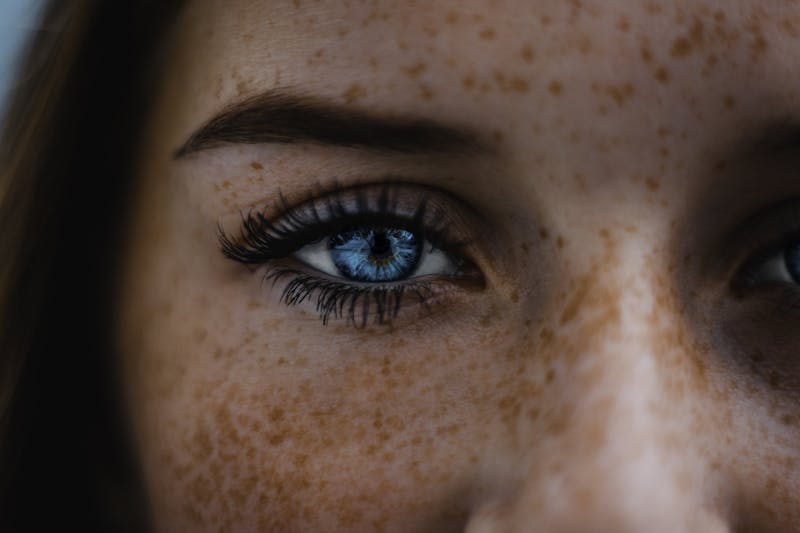
From Anne of Green Gables to Meghan Markle and Prince Harry, we have a long history of loving people with freckles. They’re cute features that signify youth and carefree playfulness. But the same can’t be said for age spots, or sun spots, the marks that appear on skin that’s been exposed to the sun for years. These spots are usually not as cute, which is why we’re fortunate that there are scientifically proven ways to minimize them.
Since people often don’t want to get rid of the freckles they’ve had since childhood, it’s important to know the difference.
What causes freckles?
To be clear, you can call age spots “freckles,” too, but what people usually mean when they talk about freckles are ephelides, pigmented lesions they’ve had since they were kids. These are hereditary, though they don’t show up in babies. They appear when the sun hits skin cells called keratinocytes, setting off a chain reaction that signals skin cells called melanocytes to release melanin, or pigment, into the keratinocytes to bind to the damaging free radicals. In people with dark skin or who tan naturally, those melanocytes evenly distribute their melanin. The melanin is more clustered in the people with freckles. Ephelides are benign and they usually fade or disappear in winter, and they might go away in adulthood.
What causes age spots?
Age spots, also called sun spots, liver spots or solar lentigines (the dermatologists’ term) don’t usually appear in children because they are caused by sun damage over time. They’re even with the skin, just like freckles, but they often look darker and bigger than freckles, and they stick around when it’s winter. These spots appear when the sun damages keratinocytes, signaling melanocytes to release melanin into them. It’s similar to the formation of freckles, but the cells don’t turn over as quickly as in younger skin, and they’re not as healthy anymore, so the pigmentation remains in place instead of disappearing after the sun exposure ends. Solar lentigines are not harmful or cancerous on their own.
Freckles and lentigines vs. moles
Raised spots aren’t freckles at all but moles. Some of those are benign, but if a mole changes color or shape, you need an expert opinion. Those moles may be cancerous, so you should have them checked out by a dermatologist right away.
Can this leopard change its spots?
If you’re looking to get rid of your brown spots, you have a number of options. First of all, we can take a closer look at them with the VISIA Skin Analysis system, which reveals to the camera what we can’t see with the naked eye. This can show us the underlying sun damage that might become visible age spots down the road, giving us an indication of what level of treatment you might need, as well as what preventative steps you can take right away.
Your treatment could include:
-
Lightening lotions & creams: If the pigmentation is minimal, you may have luck lightening it a bit with antioxidants (like vitamin C serum), but medical-grade products with retinoids and hydroquinone that both lighten the skin and prevent new pigmentation.
-
Intense Pulsed Light (IPL) photofacial: The BBL (broadband light) by Sciton is the best in its class. The light breaks up the melanin in skin cells, removing signs of hyperpigmentation, sometimes after just a single treatment.
-
Fractional laser resurfacing: Our preferred laser treatment, Halo, uses heat to vaporize skin cells on the upper and deeper layers, removing pigmented lesions.
Prevent, prevent, prevent
If we had a time machine, we’d try to put ourselves out of business by making our customers put on broadband sunscreen, wear hats, and stay out of the sun during peak hours to prevent dark sun spots from ever forming. In the absence of such magic, you can still do a lot to keep that sun from doing further damage.
When our work is done, you’ll just have to grab a makeup pencil or use one of those social media photo filters to fake your freckles when the mood strikes you. You can be radiant and clear when it doesn’t.

